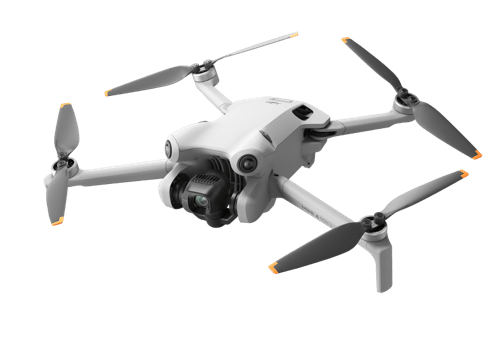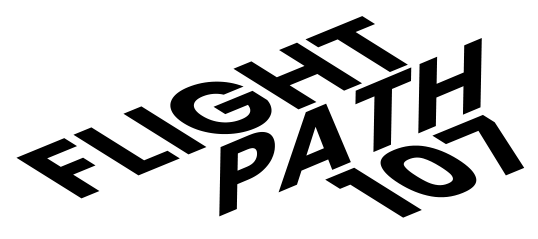Communicating Aircraft Position Relative to Runway
The 3 Part Formula
Navigating traffic patterns around an airport might seem complicated at first, but it’s actually a well-organized process with structured steps.
Each aircraft follows a specific pattern to safely approach and land on the runway. Terms like “Midfield Left Downwind Runway 9” might seem like complicated jargon, but it provides both the pilot and ATC with a precise description of the aircraft’s position relative to the runway and its stage in the approach.
Example: “Midfield Left Downwind Runway 9”
What this means:
Part 1: Midfield
The first part (“midfield”) indicates the aircraft’s position in relation to the runway. In this case “midfield” lets us know the aircraft is located roughly halfway along the length of the runway.
Part 2: Left Downwind
The second part indicates the aircraft is flying parallel with the runway on its left and heading downwind.
Downwind means in the same direction as the wind. Remember that this is viewed from the pilot’s perspective who sits on the left side of the aircraft, as opposed to Air Traffic Control.
Part 3: Runway Number
The final part, the runway number, reflects the direction the runway is pointing, based on magnetic north. For instance, Runway 09 is oriented at a compass heading of 90°, meaning it runs east-west.
Runway Orientation and Wind Patterns
Runways are typically aligned to take advantage of prevailing wind directions, which aids in more efficient takeoffs and landings.
This means that it is possible that a particular runway may be designated for takeoff at one time, but landing at another time.
Upwind vs. Downwind:
Pilots take off and land upwind (against the wind) because it provides better lift during takeoff and helps slow the plane during landing.
If a plane were to take off or land downwind (with the wind) it would increase ground speed, making takeoffs less efficient and landings harder to control.
Where is the aircraft relative to the runway?
On the Part 107 exam you’ll be asked to determine where an aircraft is located in relation to a runway (i.e. north, south, east, or west of the runway).
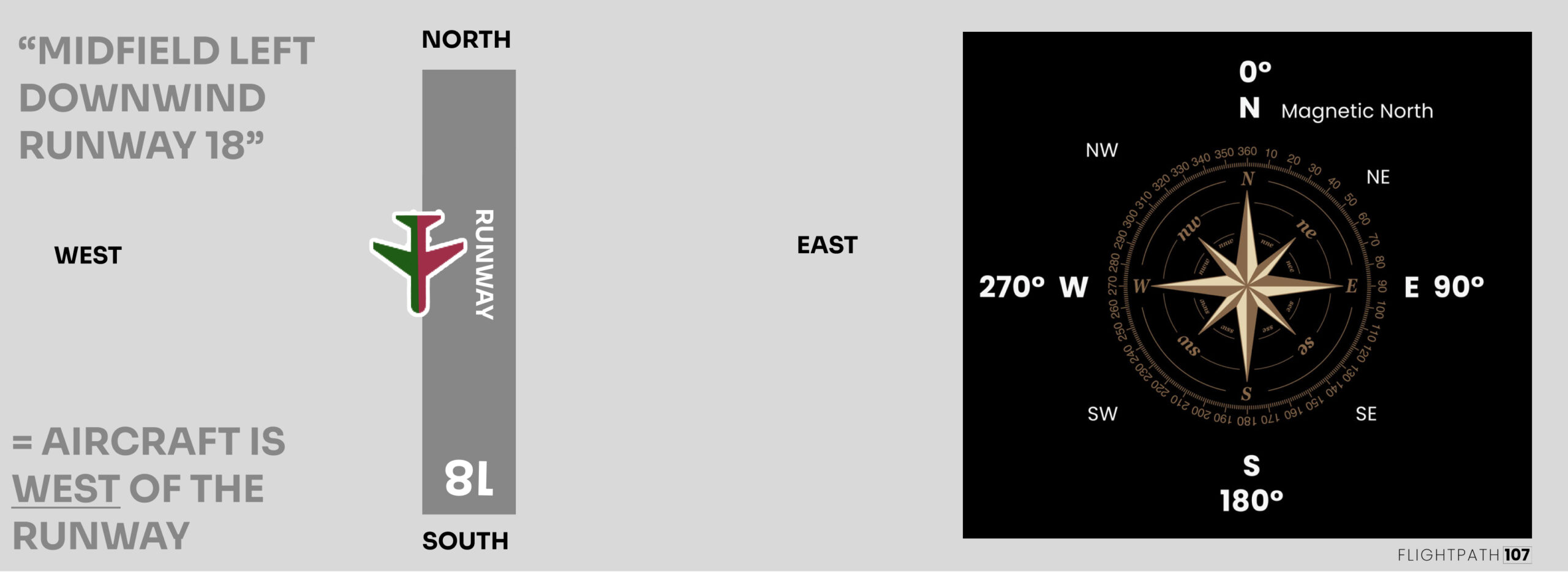
In the example above, the aircraft is midfield left downwind to Runway 18, placing it West of the runway as it enters the traffic pattern.
Here’s why:
The term midfield indicates the aircraft is halfway along the runway’s length, and left downwind means it’s flying parallel to the runway in the opposite direction of landing, with the runway on the pilot’s left side.
Since Runway 18 is oriented at 180° (due south), we can visualize the runway’s north-south orientation and position the aircraft west of it during this phase of the traffic pattern.
Using Two Examples:
In the examples below, you’ll hear announcements describing an aircraft’s location. Determine the aircraft’s position relative to the runway.
Runway 9
While monitoring the Newark Airport CTAF, you hear an aircraft announce that they are midfield left downwind to RWY 9. Where would the aircraft be relative to the runway?
The aircraft is South of the runway
Explanation:
Since Runway 9 runs east-west and the aircraft is flying “left downwind” with the runway on its left, the aircraft is flying east and is positioned south of Runway 9.
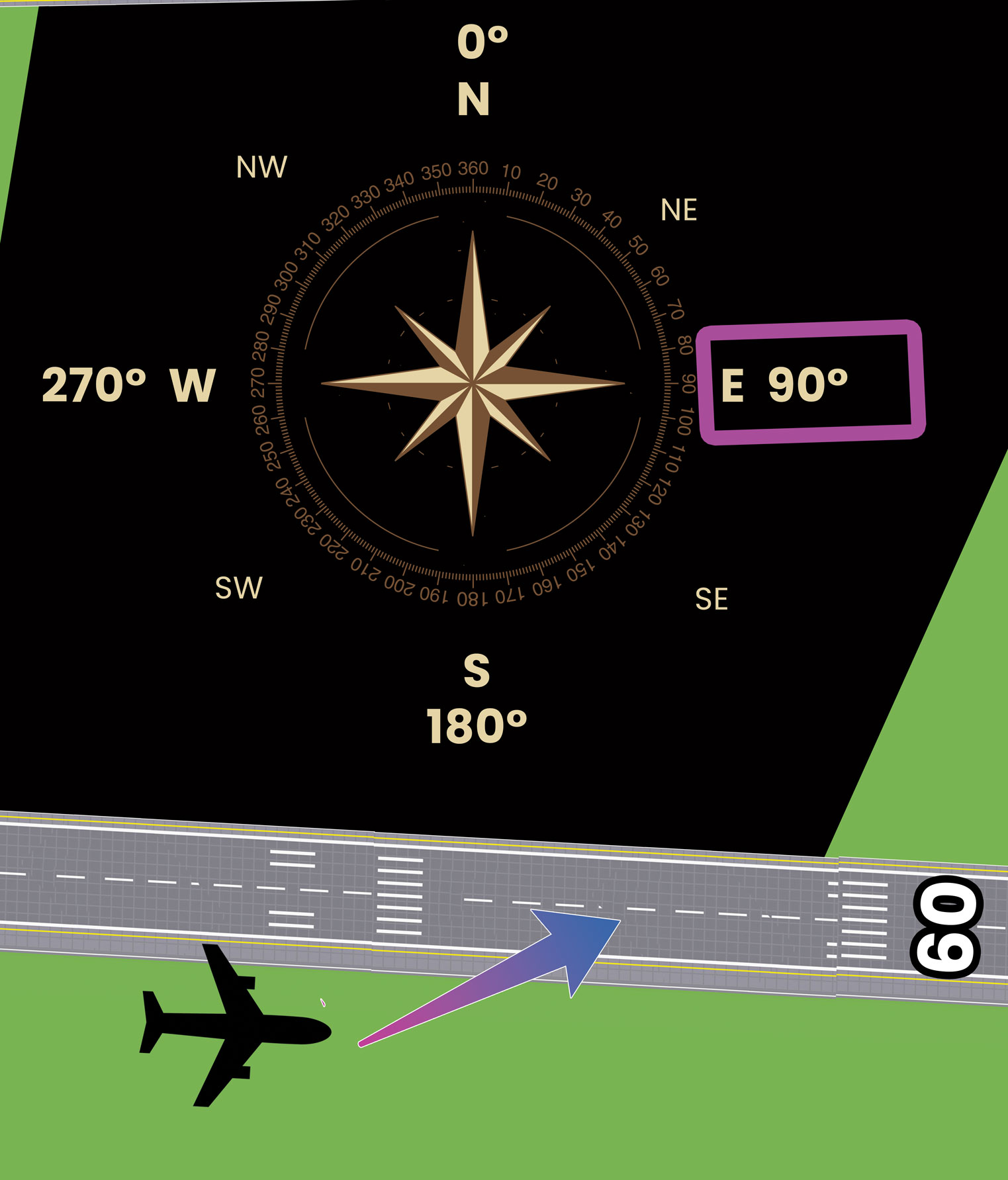
Runway 31
While monitoring the JFK Airport CTAF, you hear an aircraft announce that they are midfield left downwind to RWY 31. Where would the aircraft be relative to the runway?
The aircraft is North of the runway
Explanation:
Since Runway 31 runs northwest and the aircraft is flying “left downwind” with the runway on its left, the aircraft is flying northwest and is positioned north of Runway 31.
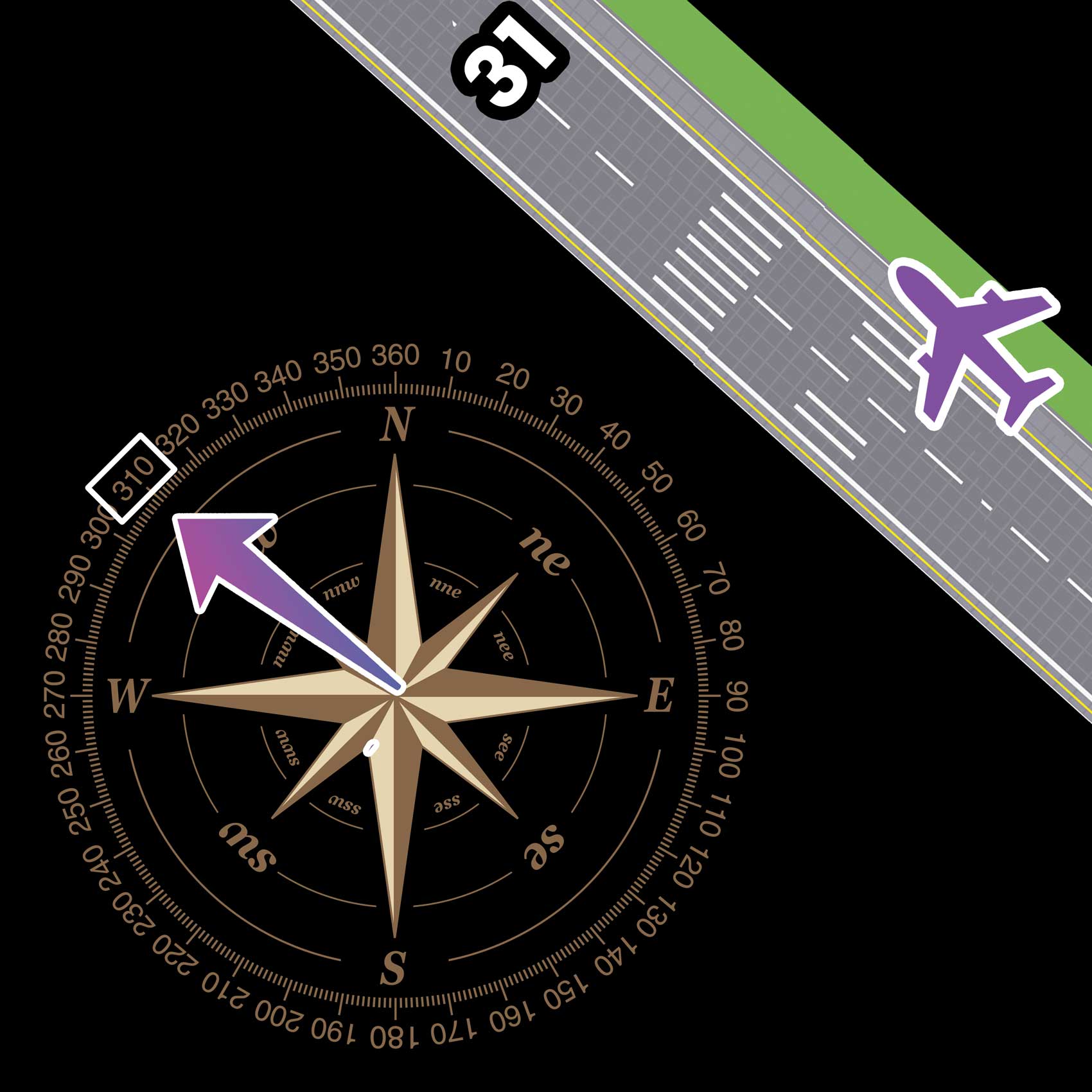
Other Examples
- Midfield Left Downwind Runway 27 = Aircraft is North of the Runway
- Midfield Left Downwind Runway 17 = Aircraft is West of the Runway
- Midfield Left Downwind Runway 35 = Aircraft is East of the Runway

